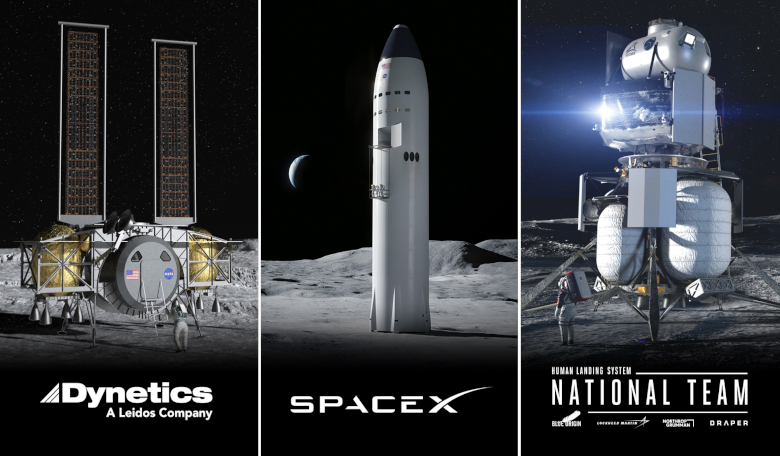Having recently won the contract to continue development of the first commercial human lander that will carry astronauts to the lunar surface in 2024, NASA has now instructed SpaceX to halt its progress following protests submitted by its rivals Blue Origin and Dynetics.
Last year, NASA awarded almost $1 billion in contracts to three private US space companies to design and develop a human landing system (HLS) for its Artemis programme.
Blue Origin won the majority of funding amounting to $579 million, Dynetics: $253 million and SpaceX: $135 million. Bids tended by two other companies, Vivace and Boeing who submitted its 'Fewest Steps to the Moon' design, were eliminated early on.
Last week it looked like the race had been won however when NASA, in a deviation from past strategies, announced that SpaceX would be the sole provider for the Human Landing System.
The move prompted an outcry from both Blue Origin and Dynetics who subsequently filed protests with the US’s Government Accountability Office (GAO) to lodge their dissatisfaction with NASA’s decision.
“The Dynetics design was not altered, only refined — what must have changed were NASA’s technical and programmatic evaluation criteria,” Dynetics said in its protest.
Blue Origin were equally outspoken about NASA’s choice: “In NASA’s own words, it has made a ‘high risk’ selection. Their decision eliminates opportunities for competition, significantly narrows the supply base, and not only delays, but also endangers America’s return to the Moon. Because of that, we’ve filed a protest with the GAO,” Jeff Bezo’s aerospace company said.
In response to these protests, NASA has now informed SpaceX to stop work until GAO resolves the matter.
“Pursuant to the GAO protests, NASA instructed SpaceX that progress on the HLS contract has been suspended until GAO resolves all outstanding litigation related to this procurement,” a NASA spokesperson told Space Policy Online.
According to Space Policy Online, the GAO has 100 days — until August 4, 2021 — to make a decision.
Even if the GAO agrees with NASA’s decision, the battle for landing on the Moon is in no way done and dusted as the space agency’s contract with SpaceX is only for the first Artemis landing and a precursor uncrewed flight test.
The US agency has already said that future missions will be issued separate solicitations for landing systems and just a few days ago released a Request for Information (RFI) asking US companies to indicate their interest in providing Artemis astronaut transit services from lunar orbit to the surface of the Moon.
“NASA is taking steps to establish a regular cadence of crewed missions to the surface of the Moon as part of the Artemis programme. The agency recently made a selection for a crewed demonstration to land the next American astronauts on the lunar surface, and is now looking to industry again, this time for long-term lunar landing services for crews beginning in the late 2020s,” the space agency said.
NASA’s decision to award the initial HLS contract to SpaceX has been put down to funding issues. In fiscal year 2021, the space agency requested $3.4 billion for the HLS programme but US Congress approved only $850 million; a shortfall that explains why NASA chose to change its strategy in awarding the contract says Dynetics.
“…the Option A award decision appears to be a direct result of NASA having only a quarter of its requested budget available for this program this fiscal year,” Dynetics note in their protest.
Because the new budget constraints were imposed after the three firms had submitted their proposals, “NASA could have amended the Solicitation to reflect its new acquisition strategy and budget; opened discussions with the offerors to advise them of NASA’s new strategy and to allow the offerors to submit revised proposals; or withdrawn or cancelled the Solicitation given its incompatibility with the severe budget constraints imposed on the HLS program,” Dynetics note.
In a further critical statement, the firm go on to say that according to an article published by Ars Technica in February, the space agency’s stated goal of returning to the lunar surface by 2024 “no longer appears to be realistic”; a premise that Dynetics agrees with in their protest lodged with the GAO on 26 April, 2021.











